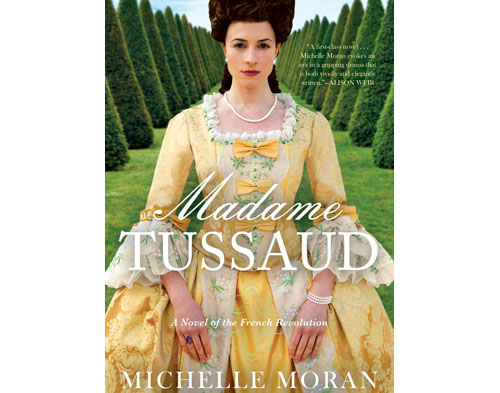Author documents life of Madame Tussaud
 Wax figures, such as the ones found in the famed Madame Tussaud’s museum at The Venetian, offer a closer look at celebrities and personalities. And if you ever have been, you know the figures are amazingly realistic portrayals of their subjects. But how much do people know about the woman who was the original creative force behind the fantastic museums?
Wax figures, such as the ones found in the famed Madame Tussaud’s museum at The Venetian, offer a closer look at celebrities and personalities. And if you ever have been, you know the figures are amazingly realistic portrayals of their subjects. But how much do people know about the woman who was the original creative force behind the fantastic museums?
Residing in Paris during one of France’s most turbulent eras, Anna Marie Grosholtz Tussaud witnessed miraculous events as well as horrifying ones as she and her family struggled to survive the French Revolution. Her life is documented in Michelle Moran’s latest book, “Madame Tussaud: A Novel of The French Revolution.”
A student of Dr. Philippe Curtius, Marie learned the art of wax modeling by fashioning figures of such renowned dignitaries of the time as Benjamin Franklin, Voltaire, and Rousseau, for the doctor’s wax salon. Marie was soon as famous as her mentor for her work and was summoned to the palace at Versailles to tutor King Louis XVI’s sister, Madame Elizabeth in the wax art. It was a wondrous time of new inventions, art and poetry and it was all celebrated in excess at the palace of the Sun King.
But the tide was soon to turn as the common people of France were starving to death while their king and his queen, Marie Antoinette, lived the high life. As the people began their revolution, Marie found herself caught between two worlds — the world of the royals and the world in which her family and friends resided — and she was soon cooperating with the revolutionaries while fearful of losing her own life. Commanded to create death masks of the nobility after their beheadings, Marie soon discovered her art becoming her very means of survival.
Just barely surviving the revolution, Marie eventually took her craft to England where she opened her own emporium of wax figures that would become legendary for years to come.
In “Madame Tussaud,” Moran creates an intimate look at the captivating life of this courageous lady, giving voice to the character in first person as she guides the reader through her life. As with her previous novels, “Cleopatra’s Daughter” and “Nefertiti,” Moran’s in-depth research into the time period and the central figures who populated it gives the novel historical validation, and her authentic writing style brings history to life through her words.
This fascinating novel is an excellent example of historical fiction with a basis on real-life people and events, and Moran once again proves herself to be an expert in this genre.














